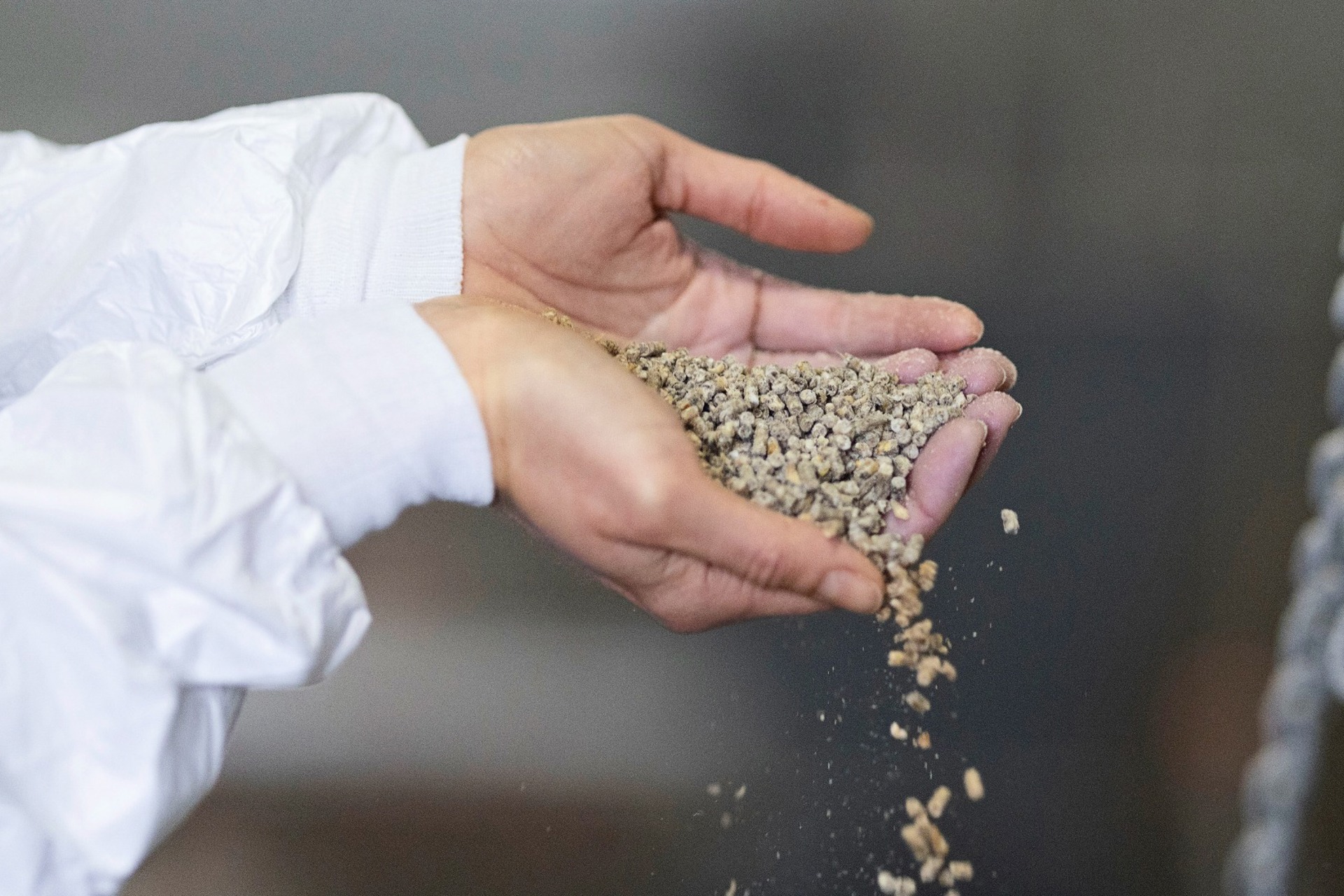Chicken feed - our biggest climate challenge

Chicken feed is our biggest challenge. Since 2020, we have reduced emissions from feed by 14 percent, but we still have a long way to go.
We will have soy-free feed
Chicken feed accounts for 70 percent of the carbon footprint in our value chain. To achieve our goal of halving emissions by 2030, we need to think differently.
Today, soy is one of the most commonly used protein sources in animal and fish feed. Although all the soy we use is certified and deforestation-free, the high global demand for feed production has required large land areas and contributed to deforestation in vulnerable ecosystems. To find better solutions, we are exploring alternative ingredients such as algae, yeast, insects, and by-products from food production. These sources can be produced with far fewer resources and often from waste that would otherwise be lost.
By using circular resources, we can create a food system where nutrients are kept in circulation rather than wasted. Such a shift is not only necessary to reduce greenhouse gas emissions and land use but also to increase food security in a world with a growing population and pressure on natural resources.
Percentage of soy in chicken feed (%)
Percentage of soy in chicken feed. The dotted line shows the target for 2025 and 2030

Collaboration is key
At Norsk Kylling, we are actively working on the development of new feed solutions. We collaborate closely with farmers, research communities, technology companies, feed suppliers, educational institutions, and authorities to find new feed ingredients with a low carbon footprint.
Feed development
Throughout 2024, we have had high activity in feed development. In collaboration with Skjetlein Upper Secondary School and Grønt kompetansesenter, we have established a new poultry research facility at the school. The facility is fully equipped for cage trials with chickens, including climate control and measurement of water and feed consumption. Norsk Kylling was the first to use it, conducting a trial to investigate the effects of biochar. The results were very promising. Biochar has many exciting properties that we look forward to exploring further.

Leading the development of new feed ingredients is challenging, but absolutely crucial to ensure responsibly produced food.
We also have our own experimental facilities that we have set up together with one of our farmers. Here, we conducted a groundbreaking trial in collaboration with NorInsect. We tested whole dried mealworms as environmental enrichment for broiler chickens, which, as far as we know, is the first experiment of its kind in a Norwegian poultry house. The mealworms were scattered, and the chickens showed great interest in searching for and eating them – an activity that stimulates natural behavior and contributes to better animal welfare.
The figure is representative of the average feed composition in 2024